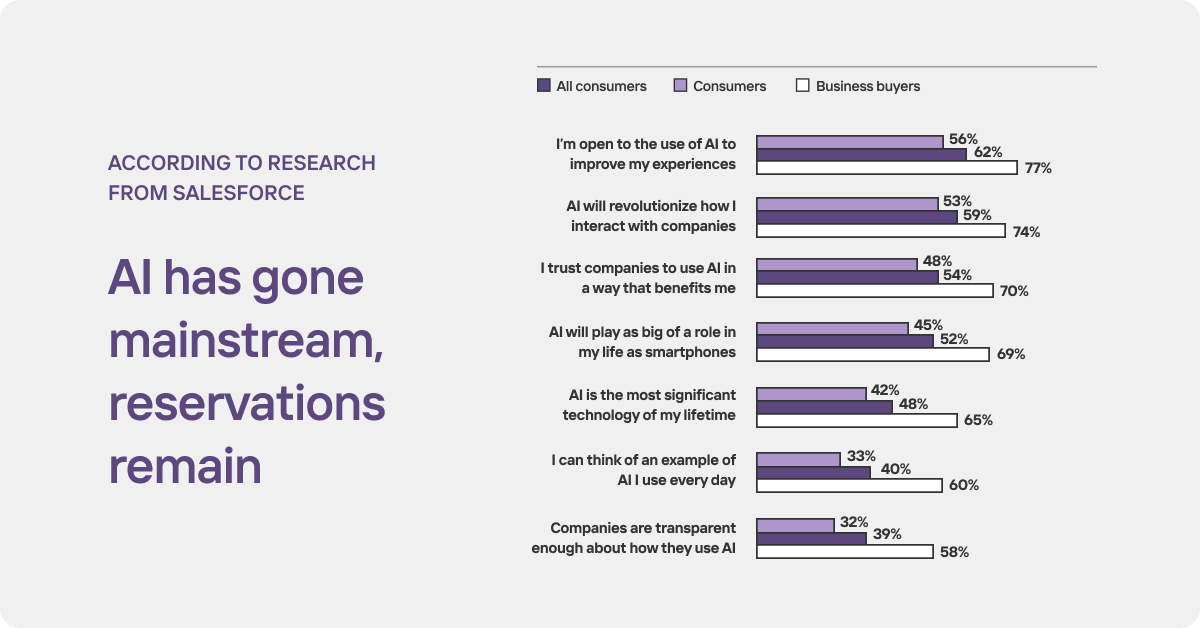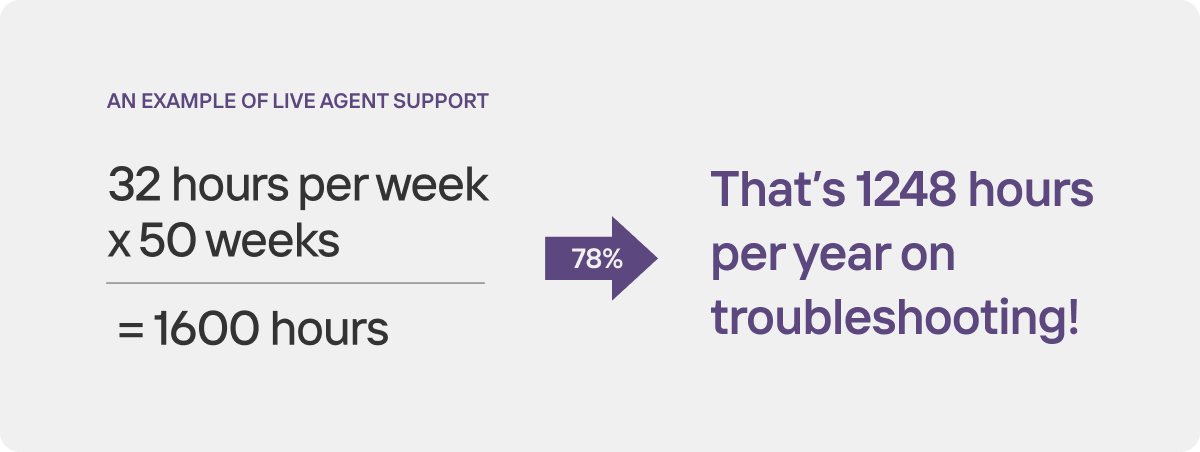As much as product support leaders might like to argue it, the truth is that offering a great customer experience can be expensive.
In today’s economy, where many companies are feeling immense pressure, there’s a need to become lean and cut costs. With a recession looming (or already here), companies everywhere are being forced to get creative about how they provide a great support experience with stagnant or shrinking budgets.
Customer support is one area that usually suffers when a cost-cutting mindset takes hold. Yet when 96% of customers report that customer service is essential in determining their loyalty to a brand, cutting costs and undermining the customer experience is a surefire way to lose customers.
Viewing customer support as a cost center is an outdated mindset. Yet with all the cost pressures business leaders are feeling, here’s an interesting fact: the whole customer support world expects automation and self-service will boom in 2023.
Why? Because automation is the best way to provide a great customer experience at scale.
Business leaders know they need to continue to invest in customer support—they just need to do it in a smarter, more scalable way. Read on to learn how.
Why investing in automation is critical
Automation has become a buzzword in the CX space.
Salesforce predicted that the use of AI would increase by 143% in 2020—before the pandemic was on anyone’s radar and catapulted the global shift to online systems. That prediction was, in large part, because they recognized that AI would help businesses keep up with evolving customer expectations. Customers expect personalization to an extent that’s both challenging and expensive to achieve.

Meeting customer expectations is particularly hard in the context of smart home appliances and consumer electronics. 90% of customers who purchase smart home devices mention that ease of use and a simple setup are the most important features on their list. Can you guess the most significant challenge they face? Troubleshooting.
If your customers have to contact you just to start using their device, the likelihood of them returning the device or canceling your service is high. When they experience issues early on in their journey with your product, they’ll never develop the level of confidence or loyalty you’re hoping to generate.
How automation reduces cost and improves customer satisfaction
The cost argument for automation is simple. Some studies suggest that investing in automation can produce a return of between three and eleven times the cost of that investment. Invest $100k, and you could get over a million dollars in value. That’s a strong argument.
The math is compelling, but the difficulty for many companies lies in figuring out how to implement automation into exceptional customer experiences. Often, the standard options for support automation fall short of customer expectations. Companies default to using solutions like chatbots that ultimately don’t perform the way customers want.
When used correctly, automation isn’t only convenient for your company, it’s incredibly valuable for your customers. The key is implementing automation strategically. A smart approach is to slowly roll out automation where it will have maximum impact rather than trying to automate everything all at once.
Automating repetitive tasks
The easiest place to start with automation is to look at your agents’ repetitive tasks.

In Mavenoid’s recent report, we found that agents spend a staggering 78% of their time on troubleshooting. Troubleshooting is one of those areas most customer support leaders write off as too complicated to automate, but that’s sometimes just a limitation of the tools they’re using. Even if you can’t automate the entire troubleshooting experience, you can often use automation to gather helpful information and to speed up the troubleshooting process.

Set those complex troubleshooting situations aside for a moment. Some customer service leaders report that 40% of all customer support tickets are mind-numbing and repetitive. Those tasks are not just a waste of your agents’ time—they could be doing far more valuable work—they’re also a massive expense. These repetitive, low-value tasks need to get done, but it’s far less expensive to use technology to automate those tasks in a repeatable and scalable way.
As a bonus, automating those mind-numbing tasks can mean to more meaningful work and higher engagement from your existing employees. No one wants to spend their career doing the same mundane task over and over.
Receiving a return on investment from your automation work often just requires reducing the top one or two areas in which your agents spend a lot of time. High volume, repetitive tasks may not take long on a per-ticket basis, but the cumulative time spent on them can be staggering.
For example, consider your return or warranty claims processes. These are already costly for your business—you’re losing money on a return—and investing endless hours of your support team’s time into them only makes the costs go up. Automation can help you streamline these processes, creating a smoother experience for both your customers and support teams.
Self-service
Self-service is the foundation of modern customer support.
Customers want instant and seamless support with minimal effort. 67% of consumers—a full 2 out of 3 customers—actively prefer self-service over contacting support when dealing with simple questions or issues.
Getting self-service right is all about making it convenient, easy to use, and tailored to your customers’ needs. That’s where automation comes into play.
With automated self-service solutions, you can automate everything from simple FAQs to troubleshooting issues to ordering spare parts. Tools with built in AI can recognize new situations and learn from the ways your live support team helps customers. As the system learns from these interactions, your self-service automatically gets better over time.
Increasing the number of opportunities your customers have to self-service means you’re delivering on their expectations while also minimizing the need to grow your support team (with all the related costs).
24/7 support
Great hardware support requires 24/7 availability.
Hardware issues can occur at any time of day, and customers are sure to grow frustrated if they can’t get help when they need it. The longer they have to wait to solve the problem, the more the customer experience suffers as a result, and the less satisfied they are as customers.

We intuitively know all this is true, yet in a recent Mavnoid report we found that only 20% of companies are able to provide 24/7 support. The overhead costs of managing in-person, phone, or email support are significant, and they only grow when you increase coverage to 24/7. Outsourcing your late-night coverage can be a cheaper way forward, but you risk creating an inferior customer experience. Is that tradeoff worth making?
Automation is often the smarter and most cost-effective approach, because it means you can offer 24/7 support, all while remaining in complete control of the experience you’re creating.
Improved customer experience
A solid 47% of customers consider switching to a competitor within 24 hours of a bad support experience. That’s why business leaders should never consider eliminating investments in support solutions as a primary way to save money. Investing strategically into automation is a better way to save money on support costs, while also protecting your customer experience (and therefore your business as a whole).
Automation enables you to:
- Offer support in the way your customers prefer it, via self-service.
- Solve way more problems with minimal effort and much shorter waiting times.
- Help larger numbers of customers in a more scalable fashion.
All of these things lead to happier, more satisfied, and more loyal customers.What successful automation looks like
If automation is so great, why does it have such a bad reputation in customer support? Because not all automation is created equal.
There’s a widespread tendency to assume that reduced contact rates and ticket deflection are indications of a successful automation strategy. The problem is—especially with hardware—that ticket deflection often happens because customers get so frustrated that they give up.
If the costs of fixing or replacing hardware are extremely high, you’re facing two possible outcomes:
- Angry customers that stay with your brand only because the switching costs are too high.
- Customers that leave you for life, because they feel like they’ve lost so much money they’d never give you a second chance.
When you force customers to self-serve when they aren’t ready or willing—or when your self-service resources don’t do the job—you’re creating friction for them. And customer friction almost always comes back to bite you.
Automation that works for teams supporting hardware requires:
- Tools that can handle the complexity of troubleshooting and think outside the box to offer tailored solutions.
- A focus on improving the resolution rate, since this is the main driver impacting whether customers will continue to purchase or not.
Automation for physical hardware support
Gone are the days of subpar product support.
Excellent customer service means investing in automation, especially when it comes to physical hardware. Mavenoid was built specifically for physical hardware companies, giving you a tailored and scalable product support solution that includes both AI-powered automation and live support—the two pillars of a seamless customer support experience.
If you’re ready to scale up your product support experience and stand out from the competition, request a demo today!
